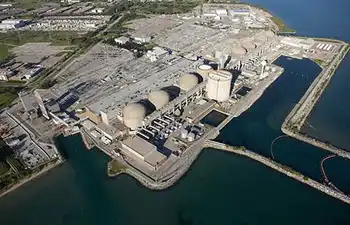EuropeÂ’s wind companies snap up stimulus cash
While those government funds have generated U.S. jobs and provided a lifeline to the green energy industry during the financial crisis, the cash flows show European companies remain crucial to U.S. goals to advance the renewable power sector.
The U.S. Treasury Department has helped fund some 150 renewable energy projects from a portion of the $787 billion American Recovery and Reinvestment Act of 2009 and has given out grants worth more than $1.5 billion to wind projects.
More than two-thirds of that money, or $1.06 billion, has gone to projects developed by European-based companies.
Iberdrola Renewables, a unit of Spanish power company Iberdrola SA, has been the top grant recipient, receiving $483.8 million, followed by Horizon Wind Energy, owned by Portuguese EDP Renewables, which has won $229.8 million.
Other European wind companies to receive grants include Spanish Acciona, which got $67.9 million, and NaturEner USA, LLC, part of Grupo NaturEner, S.A. and a subsidiary of Belgian group Sapec, which banked $62.3 million.
The top U.S. wind power generator, NextEra, a unit of FPL Group, owner of Florida utility FPL, has received about $130 million under the Recovery Act, and MidAmerican Energy Holdings Co, a unit of Warren Buffett's Berkshire Hathaway, has gotten $93.4 million.
Industry experts said the European-based companies had benefited from their own governments' policies over the past decade, enabling them to make deeper commitments to the business than their U.S. counterparts.
"It shouldn't be a surprise that a lot of the wind companies are based in Europe now because over the last decade Europe's policies have been stronger," said Rob Gramlich, senior vice president for public policy at the American Wind Association.
The Recovery Act grants replaced a tax credit that became virtually useless last year because it depended on banks to provide financing for new projects through tax equity markets.
Following the financial crisis that wiped out Lehman Brothers and forced banks to pull back from project lending in 2008, wind developers had few options to raise cash.
That tilted the playing field toward companies with large balance sheets, said Gabriel Alonso, CEO of EDP's Horizon Wind Energy, the third-largest wind company in the United States.
Both Iberdrola and Horizon said they hire U.S. workers to develop and build their projects. The success of the program has given then renewed confidence to grow their wind generation in the United States rather than in other countries.
EDP had considered moving funds out of the Horizon unit to Europe or South America, Alonso said, but the passage of the Recovery Act "completely changed the landscape."
"Not only did we keep all the capital we were planning to invest — more than $1 billion — we even brought some turbines from Europe" to the U.S., and lifted spending to $1.5 billion, he said.
EDP, the fourth-largest wind generator globally, generates about 45 percent of its revenues from its U.S. Horizon unit, he said, and the company is now looking at projects it can begin building by the end of 2010 and have operating by the end of 2012, both requirements of the Recovery Act.
"We are committed to reinvesting all the money we get from the grant program back into the United States," Alonso said.
"The point of the Recovery Act was to put Americans to work building projects, and that's exactly what it's doing," Gramlich said.
The industry built 5,800 megawatts in the first nine months of 2009, but is not likely to reach the record 8,000 MW built last year. Still, the growth is far better than many had expected earlier this year.
While the bulk of Recovery Act money has gone to bigger players, some smaller U.S. developers have benefited, such as First Wind, EverPower Renewables and the Cannon Power Group.
For San Diego, California-based Cannon, which received $19.4 million to expand its Windy Point/Windy Flats project to up to 500 MW, the money has been hugely important, said President Gary Hardke.
The company has been developing renewable projects since 1979, and although it lacks the balance sheet of the major power companies, it has built more than 4,000 MW of projects.
"We have to work harder and be more agile," Hardke said, adding the company expected to get another $151 million from the Recovery Act as early as next month for another project.
Related News

Ontario confronts reality of being short of electricity in the coming years
TORONTO - In a fit of ideological pique, Doug Ford’s government spent more than $200 million to scrap more than 700 green energy projects soon after winning the 2018 election, portraying them as “unnecessary and expensive energy schemes.”
A year later, then Associate Energy Minister Bill Walker defended the decision, declaring, “Ontario has an adequate supply of power right now.”
Well, life moves fast. At the time, scrapping the renewable energy projects was criticized as short-sighted and wasteful. It seems especially so now as Ontario confronts the reality of being short of electricity in the coming years.
How short? A recent report by…




